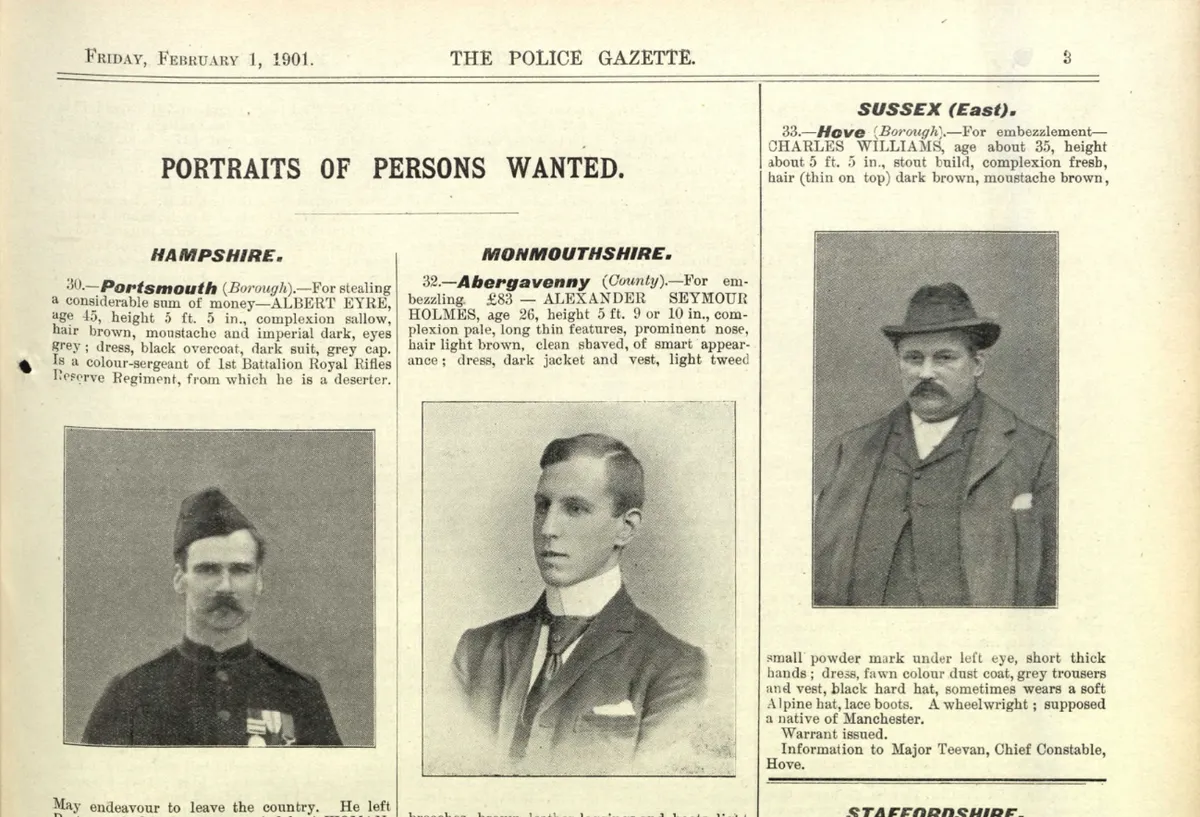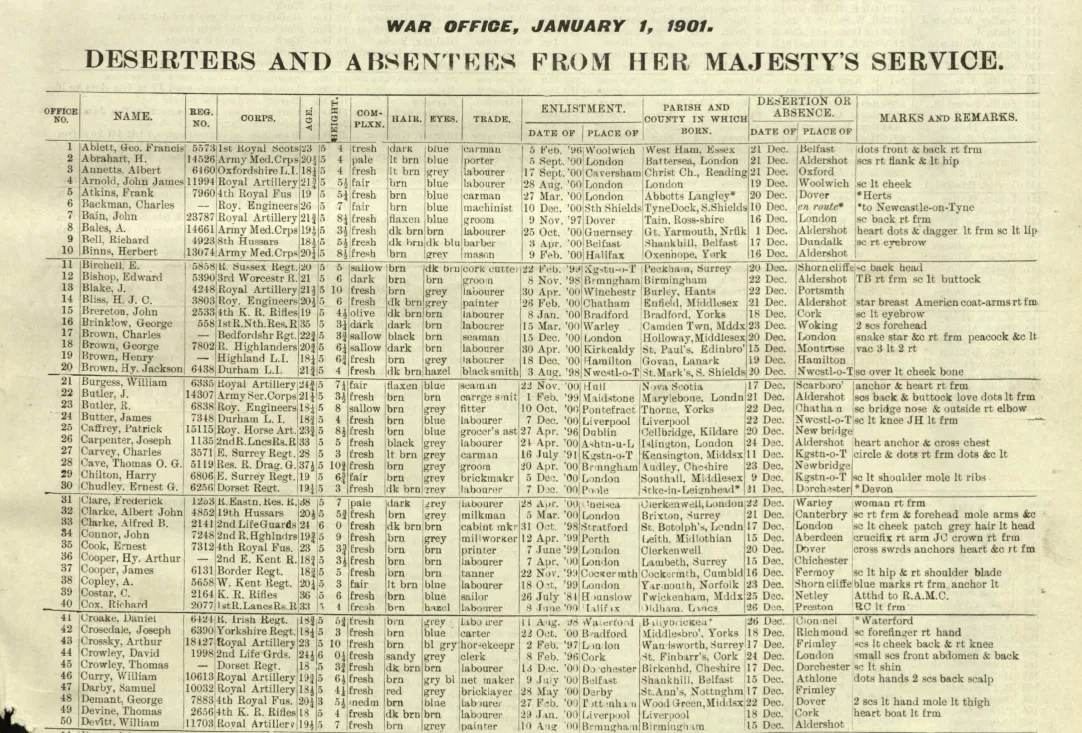This article is about the Police Gazette published in the UK, not the National Police Gazette first published in the US in 1845, which was a tabloid publication covering crime.
The Police Gazette was the brainchild of John Fielding, a London magistrate and brother to the famous novelist Henry. It began in 1772 as The Quarterly Pursuit. It was distributed free to ‘the mayors and chief officers of corporations, the acting magistrates in the counties at large, and the keepers of every county gaol throughout England’. Its purpose was to prevent crime ‘by the speedy detection of criminals. Later, the title was changed, first to The Public Hue and Cry and then simply Hue and Cry. It became the Police Gazette in 1839.
If you have a black sheep in your family tree, you may well find the journal fascinating, because the Police Gazette, and its predecessors, provided detailed physical descriptions of offenders, as well as the reason why the authorities were interested in them. From the 1890s photographs are sometimes included.

The physical descriptions can be particularly vivid. A tramp, Charles Toplis, sought for stealing a small amount of money and four pounds of sugar in 1917, was described as being ‘fond of writing poetry’. And Percy Toplis, who passed a bad cheque in 1918, was said to be ‘clean shaven but may have small tuft of hair under nostrils.’ Percy is known to history as the ‘Monocled Mutineer’: he was killed by police in 1920 while resisting arrest.
Deserters in the Police Gazette
A regular feature of the Police Gazette were the lists of deserters. Until the 1870s, when conditions began to improve, desertion was common in the British Army with a bounty of up to 20 shillings (£1) giving an incentive for the police to track them down. In particular, the Police Gazette is the only place where lists of deserters from the armed forces or men who refused to join the call up during the First World War can be found.

Originally the journal consisted of two pages, issued every three weeks. The front page consisted of public announcements, notices of rewards and reports of offences. The back page contained lists of deserters from the armed forces along with names, descriptions, and details including the date of desertion and the unit they had come from. After it was taken over by the Home Office in 1828, the journal was then issued twice a week and grew to four pages in length. More, pages were added as more information was shared between police forces.
In 1883 responsibility passed to the Criminal Record Office at Scotland Yard who kept detailed information about all known and suspected criminals for police forces across England and Wales. Increasingly the information was gathered together in supplements. Supplement A for example listed ’active travelling criminals’ and Supplement D for ‘absentees and deserters from HM Forces’.
The Police Gazette finally ceased publication in 2017.
How to find copies of the Police Gazette
Despite a wide circulation, there is no complete set of the journal. The Police Gazette largely covers crime and criminals in England and Wales. There was a separate edition for Ireland, but very few copies appear to survive. There doesn’t seem to have been an equivalent in Scotland.
In particular many of the supplements don’t survive. There are several scattered collections at archives and libraries. The National Archives has copies between 1828 and 1845 in series HO 75. Series MEPO 6 also has a small selection of Police Gazettes. Some other issues are at the British Library.
However, it is undoubtedly easier to use the Police Gazette online through one of the websites below, although none of these sites has complete sets of the journal.
The British Newspaper Archive and Findmypast has copies for 1858, 1880, 1898 and 1916-1918 as well as some copies of Hue and Cry 1773-1776 and 1829 (although listed under Police Gazette). Findmypast also has an index to deserters who appeared in the Police Gazette during the 1830s and First World War deserters.
TheGenealogist has recently added copies from 1901, 1911, 1921 and 1931 to its 'Court and Criminal Records' collection. Listing over 56,000 individuals they include photographs of many offenders as well as descriptions and known aliases.
Forces War Records has an index of Army deserters from 1916-1918 as well as an index of deserters, 1812-1927. Both collections are indexes compiled from issues of the Police Gazette.
Ancestry has three collections with Police Gazette material: “UK, Police Gazettes” covering 1812-1902 and 1921-1927; "UK, Registers of Habitual Criminals and Police Gazettes" covering 1834, 1885, 1901, 1911, 1921 and 1931 and an index "UK, Military Deserters, 1812-1927".







